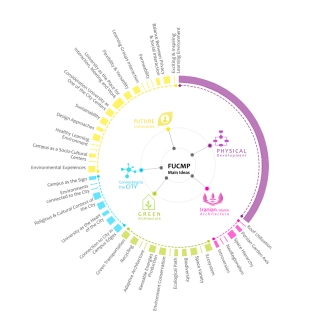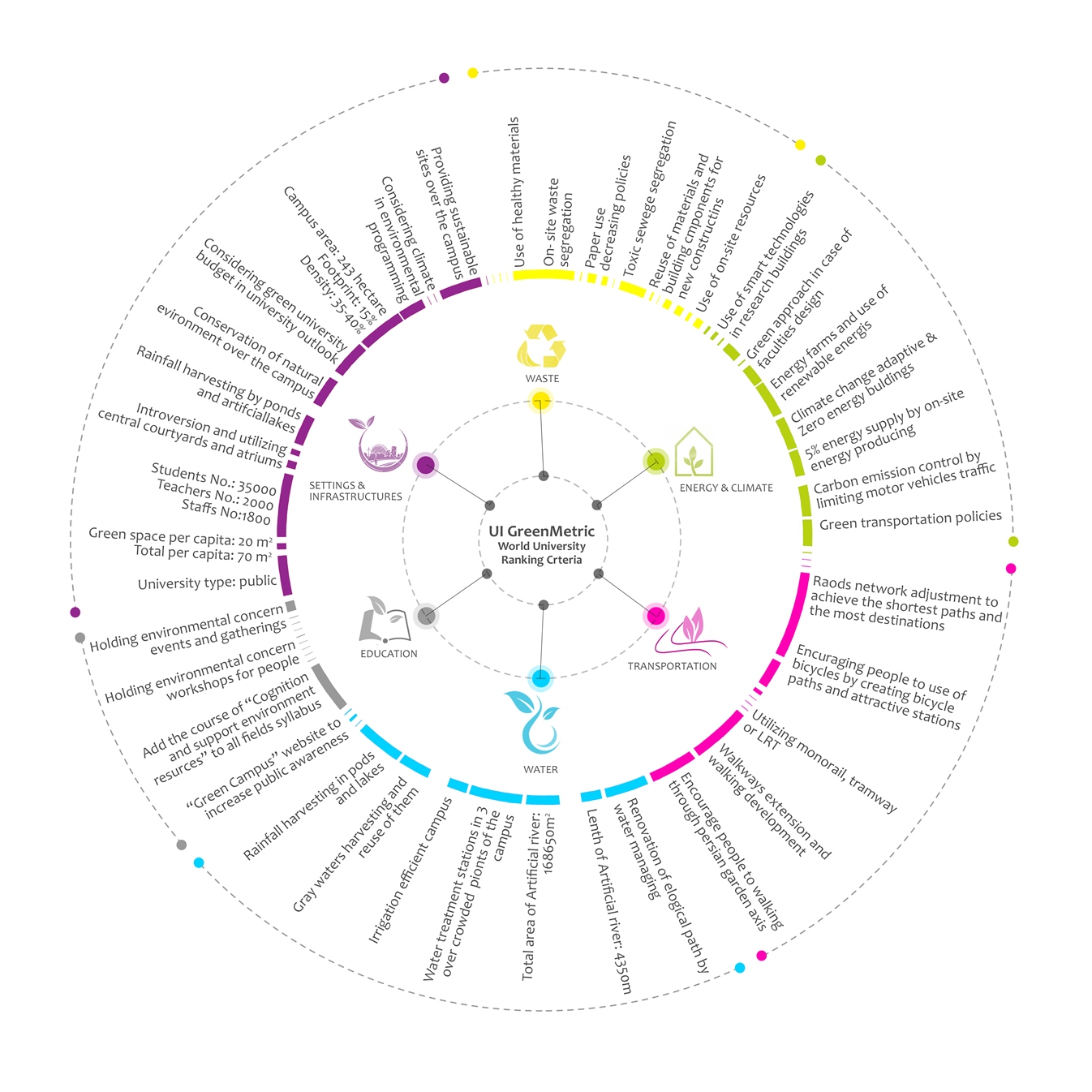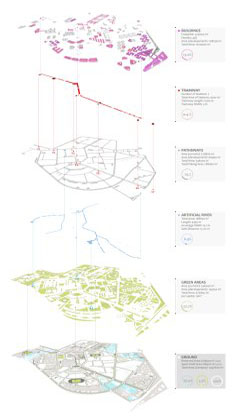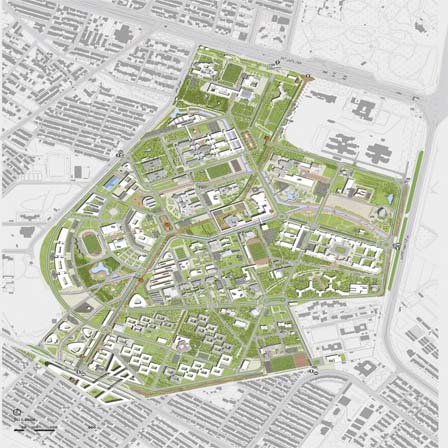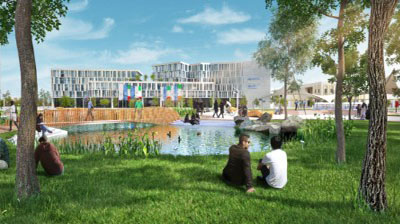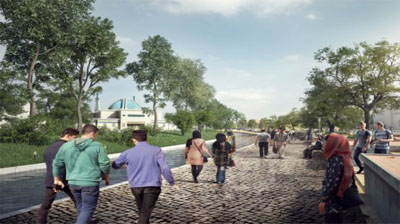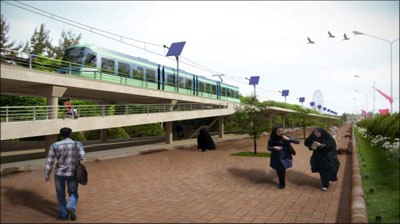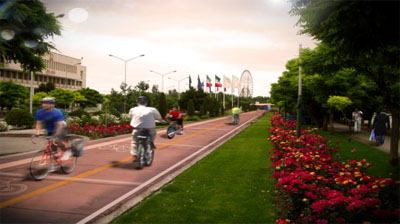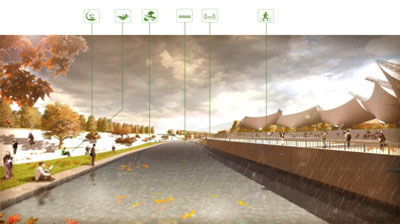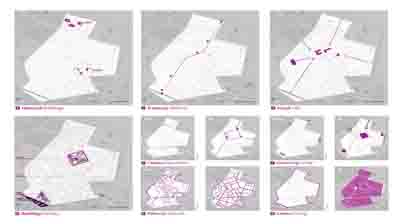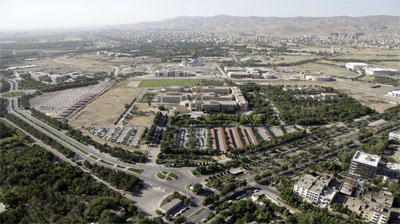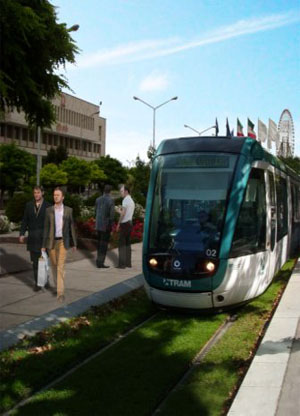کتابچه طرح جامع پردیس دانشگاه فردوسی مشهد

Ferdowsi University of Mashhad Campus Master Plan
Architect: FUCMP Office
Project manager: Hamed Kamelnia
Client: Ferdowsi University of Mashhad
Location: Mashhad, Iran
Project Area: 243.7 hectare
Project Year: 2011
Ferdowsi University Campus Master Plan (FUCMP) has been established in 2011 in order to set a strong thinking about “Creating an environmentally sustainable campus and green development”. Studies on master plan programming, design and implementation can be categorized into 14 chapters: 1. Basic Studies; 2. Educational Programming; 3. Spatial- Physical Cognition; 4. University’s Buildings Identification; 5. Principles of University Spaces Design; 6. World Case Study; 7. Spatial Analysis of Campus Land uses; 8. Physical Programming Principles; 9. Campus Design Principles; 10. Transportation and Traffic; 11. Campus Signs; 12. Landscape and Environment; 13. Passive Defense; 14. Building and Construction Details.
In recent years, Islamic countries have been considered “Islamic traditions and Contemporary Design” as the principles of universities outlook. Due to the physical needs and value- oriented viewpoints, physical outlook of Ferdowsi University of Mashhad can be determined as below:
Development and improvement of university’s spatial needs with accordance to sustainable development of Iranian- Islamic architecture patterns.
Environment improvement, resource conservation and green university achievement have been noted as a main goal in physical programming.
Design strategies can be categorized into the UI GreenMeteric WUR criteria: 1. Setting and Infrastructures; 2. Energy and Climate Changes; 3. Waste; 4. Water; 5. Transportation and 6. Education. The ambitious for achieving these criteria led design team to focus on reducing environmental damages and spreading the use of renewable energies and green technologies.
The main goals of Ferdowsi University of Mashhad are as follow:
- Increasing place attachment and creating a strong sense of place;
- Developing the scientific, healthy and creative environment;
- Creating sociable environments and desirable interaction;
- Considering architecture, urban and environmental design criteria (in order to achieving green campus);
- Relationship between internal learning environments and external society;
- Promoting current situation;
- Increasing environment legibility;
- Education, research and experience in a responsive environment;
- Sustainable campus as an urban-regional sign.
According to mentioned goals, the design strategies in campus master plan are:
- Relationship with city;
- Consideration of Iranian-Islamic architecture patterns with accordance to contemporary design principles;
- Green architecture design;
- Campus walkways development;
- Creating linking buildings;
- Space optimization;
- Environmentally adaptive architecture;
- Use of the latest space standards
- Considering future universities architectural principles;
- Creating social learning centers in 9 zones of the campus;
- Creating a legible spatial network over the campus;
- Use of on- site ecological potentials and renovation of the stream as the ecologic axis;
- To legible the 12 faculties borders;
- To unify the same land uses and avoid diffused buildings over the campus;
- To create recreational and desirable environments for students and other users;
- Green light transportation system in the main axis of the campus;
- The Legible entrances for campus;
- Creating a socio-physical area in heart of the campus;
- To increase accessibility to different destinations over the campus;
- Maximum use of current buildings and renovating them;
- Minimum of destruction and maximum of flexibility in future buildings;
- Respect to physical-spatial history of campus and reviving the past memories; and
- To achieve 90 sqm public per capita and 27 sqm spatial per capita for each student.
